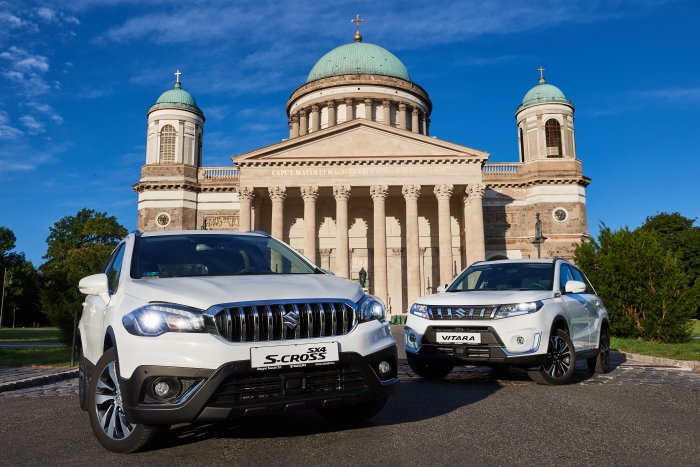From Loom Manufacturing to a World Automotive Brand

3D printers, LED bulbs, the internet, computers, space flight, microwave ovens, mobile phones, television: These are just a few of the life changing technical innovations of the last 100 years still shaping our daily routine. It is often difficult to keep up with the dynamically changing everyday life, and as a company it is especially challenging to stay up-to-date, winning customers with relevant, valuable products that serve current needs at all times. Experience, as well as results, show that 100-year-old Suzuki accomplishes this challenge successfully.
What is more, due to its site in Esztergom, the company and the brand are also a little Hungarian. The Hungarian experts of Magyar Suzuki have already produced more than 3.5 million cars, which can be found on roads all over the world, thus Hungary can be rightfully proud of this performance too.
On the occasion of its centenary, Zsuzsanna Bonnár-Csonka, head of corporate communications at Magyar Suzuki Corporation, spoke with the Budapest Business Journal about how one of the world’s largest car companies came to life from the work of a young Japanese dreamer.
Field of Dreams
Being the child of a Japanese textile weaving family, Michio Suzuki, founder of Suzuki Motor Corporation, spent a lot of time in the cotton fields, pondering how he could make his mother’s job easier. Thoughts were followed by deeds, and the young man created his first pedal-powered loom at the age of 22, which could weave in several colors and patterns that were unique at the time. By the age of 30, Michio already employed 60 people at his plant. The company, known as Suzuki Loom Manufacturing after 1920, soon became one of the largest loom factories in Japan.
From Spinning Wheel to 2 and Then Four Wheels
Shunzo, the son of Michio, is associated with the company’s first major innovation and profile change. The young man asked the company’s engineers to design a motor-powered bicycle that could easily be used by anyone, even in the strong headwinds frequent in the region.
Based on Shunzo’s concept, Suzuki launched its Power Free moped in 1952, followed by ever more powerful motorcycles. Soon afterwards, the company, which in the meantime had been renamed Suzuki Motor Corporation, built its first mini-car in 1955, drawing on its experience gained in the field of motorcycles.
With the iconic Suzulight family car, driving became available to a wider range of consumers than ever before. And the development of the group’s marine engine business can be linked to algae fishing. Looking to accelerating algae harvesting gave Suzuki the idea to power boats with an outboard engine and thus it built the first water-cooled 5.5-horsepower boat engine in the 1960s.
Affordable Hybrid Autos
In 100 years, Suzuki has grown from a small loom maker to an international automotive company. Today, the group operates in 210 countries; it manufactures cars, motorcycles, boat engines and quads for countries all around the world. From the very beginning, all of Suzuki’s innovations sought to create valuable products at an affordable price that make everyday life easier for as many people as possible.
Vehicle manufacturing cannot exist without innovation. In this spirit, the Suzuki Group has entered a new era of production, placing sustainable mobility at the heart of its innovation activities over the next 100 years. Our goal is to produce the next generations of hybrid and environmentally conscious cars in the usual high quality and cost-effective way, so that we can sell them at a consumer price that not only the audience of luxury products can afford.
It was a significant step for Magyar Suzuki on this path that in December 2019 we started series production of hybrid vehicles at our plant in Esztergom. It is a challenge and a responsibility for us at the same time, as our mission is to reach out to a wide range of people and promote sustainable mobility.
For more information, see: globalsuzuki.com/100th

SUPPORT THE BUDAPEST BUSINESS JOURNAL
Producing journalism that is worthy of the name is a costly business. For 27 years, the publishers, editors and reporters of the Budapest Business Journal have striven to bring you business news that works, information that you can trust, that is factual, accurate and presented without fear or favor.
Newspaper organizations across the globe have struggled to find a business model that allows them to continue to excel, without compromising their ability to perform. Most recently, some have experimented with the idea of involving their most important stakeholders, their readers.
We would like to offer that same opportunity to our readers. We would like to invite you to help us deliver the quality business journalism you require. Hit our Support the BBJ button and you can choose the how much and how often you send us your contributions.










